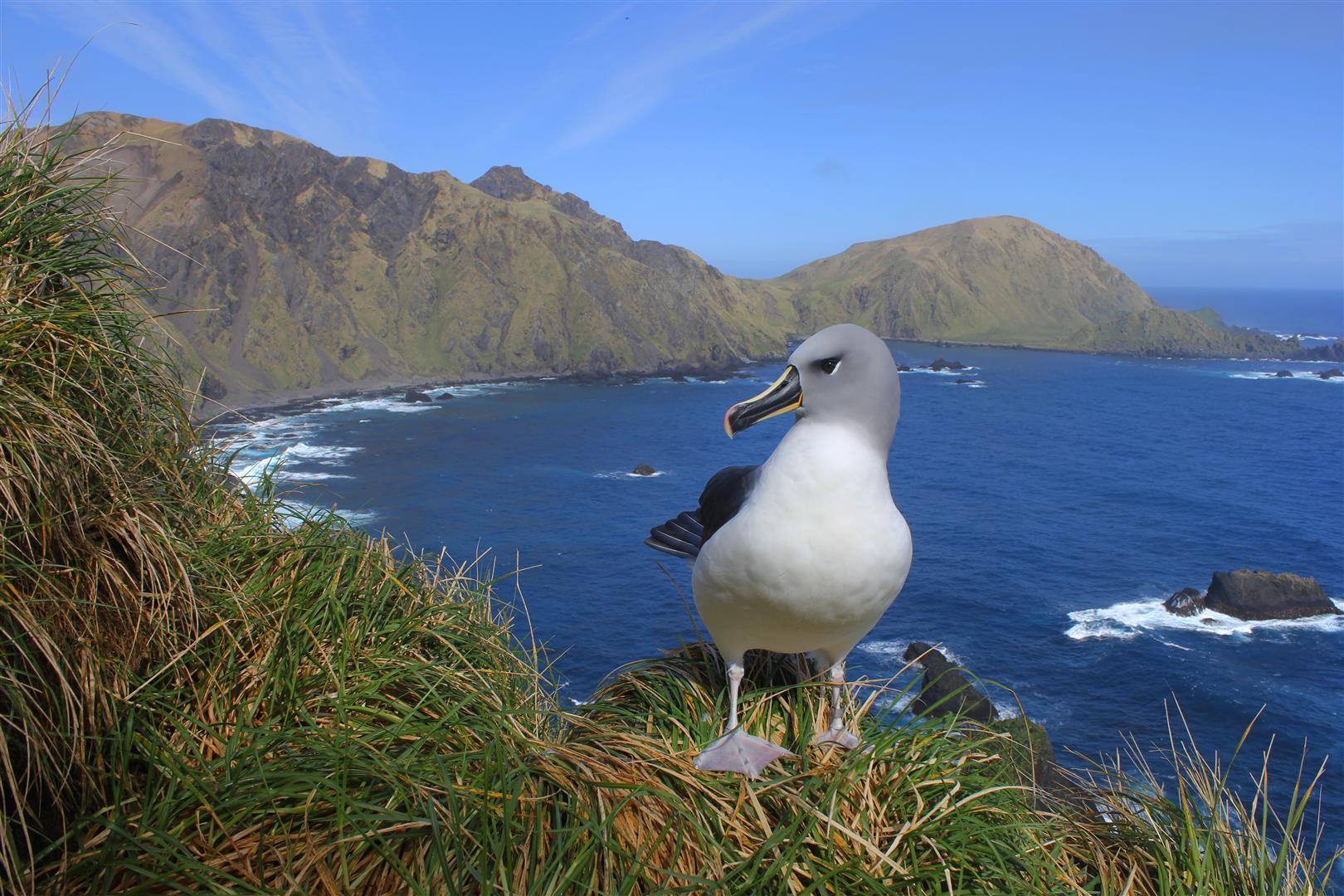
Grey-headed Albatross on Macquarie Island, photograph by Melanie Wells
Jaimie Cleeland (Institute for Marine and Antarctic Studies, University of Tasmania, Battery Point, Tasmania, Australia) and colleagues have published open access in the journal Scientific Reports on influence of introduced European Rabbits Oryctolagus cuniculus (now eradicated) and extreme weather patterns on the breeding albatrosses of Australia’s sub-Antarctic Macquarie Island.
The paper’s abstract follows:
“Invasive species present a major conservation threat globally and nowhere are their affects more pronounced than in island ecosystems. Determining how native island populations respond demographically to invasive species can provide information to mitigate the negative effects of invasive species. Using 20 years of mark-recapture data from three sympatric species of albatrosses (black-browed Thalassarche melanophris, grey-headed T. chrysostoma, and light-mantled albatrosses Phoebetria palpebrata), we quantified the influence of invasive European rabbits Oryctolagus cuniculus and extreme weather patterns on breeding probability and success. Temporal variability in rabbit density explained 33–76% of the variability in breeding probability for all three species, with severe decreases in breeding probability observed after a lag period following highest rabbit numbers. For black-browed albatrosses, the combination of extreme rainfall and high rabbit density explained 33% of total trait variability and dramatically reduced breeding success. We showed that invasive rabbits and extreme weather events reduce reproductive output in albatrosses and that eliminating rabbits had a positive effect on albatross reproduction. This illustrates how active animal management at a local breeding site can result in positive population outcomes even for wide ranging animals like albatrosses where influencing vital rates during their at-sea migrations is more challenging.”
Read a popular account of the publication here.
Reference:
Cleeland, J.B., Pardo, D., Raymond, B., Terauds, S., Alderman, R., McMahon, C.R., Phillips, R.A., Lea, M.-A. & Mark A. Hindell, M.A. 2020. Introduced species and extreme weather as key drivers of reproductive output in three sympatric albatrosses. Scientific Reports: 10: 8199. doi.org/10.1038/s41598-020-64662-5.
John Cooper, ACAP Information Officer, 21 May 2020Z

 English
English  Français
Français  Español
Español 












